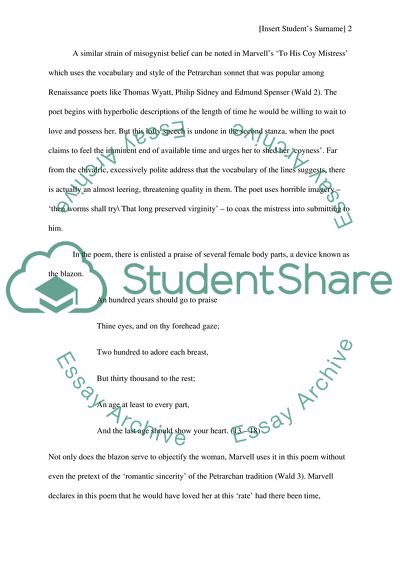Cite this document
(“Reflection of a Culture: Comparing the Female in Andrew Marvell's To Research Paper”, n.d.)
Retrieved from https://studentshare.org/miscellaneous/1573584-reflection-of-a-culture-comparing-the-female-in-andrew-marvells-to-his-coy-mistress-and-the-garden
Retrieved from https://studentshare.org/miscellaneous/1573584-reflection-of-a-culture-comparing-the-female-in-andrew-marvells-to-his-coy-mistress-and-the-garden
(Reflection of a Culture: Comparing the Female in Andrew Marvell'S To Research Paper)
https://studentshare.org/miscellaneous/1573584-reflection-of-a-culture-comparing-the-female-in-andrew-marvells-to-his-coy-mistress-and-the-garden.
https://studentshare.org/miscellaneous/1573584-reflection-of-a-culture-comparing-the-female-in-andrew-marvells-to-his-coy-mistress-and-the-garden.
“Reflection of a Culture: Comparing the Female in Andrew Marvell'S To Research Paper”, n.d. https://studentshare.org/miscellaneous/1573584-reflection-of-a-culture-comparing-the-female-in-andrew-marvells-to-his-coy-mistress-and-the-garden.


